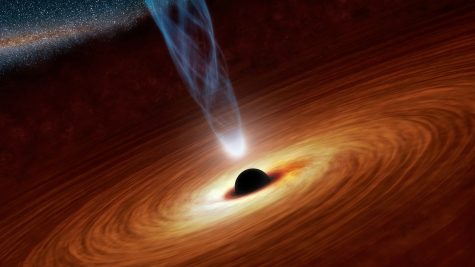Tracking the Third Type of Black Holes

Black holes are mysterious entities with a gravitational field so strong that light cannot escape its pull.
From its discovery in 1971, scientists from the Harvard-Smithsonian Center for Astrophysics have finally uncovered definitive evidence for the existence of middleweight black holes, objects of immense gravitational pull that can supposedly rip through the fabric of space-time. This discovery, which fills in the gap between stellar black holes and supermassive black holes, may provide astronomers a clearer explanation to the formation of the monster-sized black holes that lie in the center of galaxies.
The third and final class of black holes, the intermediate-mass black holes, was a hypothetical class that was estimated to weigh about one hundred to ten thousand solar masses. Similar to supermassive black holes, intermediate-mass black holes are too large to form from the collapse of a single star. Scientists have predicted that these black holes are created from the amalgamation of several stellar black holes, and others have argued that they could also form from a collapse that results from the collision of multiple massive stars. The exciting discovery of a mid-class black hole, which was published in the science journal Nature on February 9th by lead author Bulent Kiziltan and his associates at the Harvard-Smithsonian Center for Astrophysics, may provide further insights on the formation, existence, and fate of these virtually unknown entities.
Kiziltan and his team of researchers believe that the intermediate-mass black hole lies in a star cluster called 47 Tucanae, which is approximately 13,000 light-years away from Earth. This star cluster is composed of thousands of stars that are squished into a space that runs only one hundred and twenty light-years in distance. Because of this immense density, previous efforts of finding black holes in 47 Tucanae were not very successful. Kiziltan’s team, however, found two compelling pieces of evidence that suggests the existence of a mid-weight black hole within the center of 47 Tucanae. The first is the general movement of the stars in 47 Tucanae. In a normal high-density star cluster like 47 Tucanae, heavier stars tend to accumulate toward the center of the cluster. If a black hole were to exist in the center of 47 Tucanae, stars within the cluster should move in a spiralling, elliptical motion by the black hole’s gravitational pull. Kiziltan’s team was able to detect this gravitational stirring by observing the movement of the stars and comparing them to advance computer simulations. The second piece of evidence can be found in the pulsars that exist in 47 Tucanae, which are celestial objects that emit easily detectable pulses of radio waves.By locating the sources of these radio waves, the researchers found that the pulsars were abnormally far from the center of the star cluster, which could mean that a black hole’s gravitational pull flung it away from the core. The combined evidence uncovered by Kiziltan’s team suggests that there is a black hole of about 2,200 solar masses within the center of 47 Tuscanae.
The discovery in 47 Tucanae is just the very beginning of a series of investigations for other mid-weight black holes that remain hidden in other globular clusters. These findings will eventually allow scientists to understand one of the most mysterious entities in space, which may provide the key to explain the origin of the universe.





